Children

Dig Into History Magazine for Kids and Teens
Worshiping Heaven
For almost 500 years, emperors of the Ming and Qing dynasties offered sacrifices and prayers at the Temple of Heaven in Beijing.
3 min |
November/December 2016
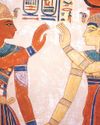
Dig Into History Magazine for Kids and Teens
Peace Reigns
The news spread throughout Egypt—a new pharaoh, Ramses III, now sat on the throne.
4 min |
September 2017
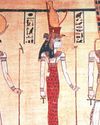
Dig Into History Magazine for Kids and Teens
Problems To The East
Ramses III, the second king of Egypt’s 20th Dynasty, is viewed as Egypt’s last truly great pharaoh.
3 min |
September 2017
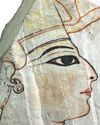
Dig Into History Magazine for Kids and Teens
The Successors
Following the death of Ramses III, eight pharaohs, all named Ramses, ruled Egypt.
1 min |
September 2017
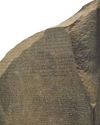
Dig Into History Magazine for Kids and Teens
Stone Code
Hundreds of ships, led by the French general Napoleon Bonaparte, sailed from France in May 1798 on a secret mission.
1 min |
September 2017
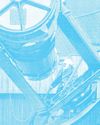
Dig Into History Magazine for Kids and Teens
Up & Away!
Eclipse observers often face unexpected difficulties, sometimes on their way to their chosen sites and sometimes at a site itself.
2 min |
January 2017

Dig Into History Magazine for Kids and Teens
Edison's Eclipse Adventure
Thomas Edison (1847–1931) is the best-known inventor in American history.
3 min |
January 2017
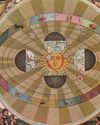
Dig Into History Magazine for Kids and Teens
Digging Up Copernicus
The scientist “who made the Earth a planet” is how the Harvard-Smithsonian astronomer Owen Gingerich refers to Nicolaus Copernicus (1473–1543). Copernicus’ path breaking book, On the Revolutions of the Heavenly Spheres,challenged the centuries-old belief that the Earth stood stationary at the center of the cosmos.
2 min |
January 2017
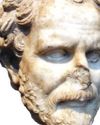
Dig Into History Magazine for Kids and Teens
Demosthenes & Cicero
Even today, more than 2,000 years after they lived, Demosthenes and Cicero are still considered two of history’s most outstanding orators.
4 min |
May/June 2017
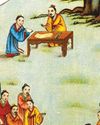
Dig Into History Magazine for Kids and Teens
Confucius & Socrates
Some teachers are so inspirational that their influence lives on long after they die.
3 min |
May/June 2017

Dig Into History Magazine for Kids and Teens
Fire Magic
Think about fire—its flames and the light we see and the heat we feel. Think, too, about how fire can warm us and even burn down entire forests. We know that the process is a rapid chemical reactionin which oxygen molecules—two oxygen atoms bonded together—break apart, releasing energy, which we experience as the light and heat (see also pages 4–5). But to people in ages past, fire was mysterious, almost a living thing. And, some saw it as a link between the natural and the supernatural.
3 min |
July/August 2017

Dig Into History Magazine for Kids and Teens
Poisonous Matches
Some inventions do not have good consequences. Early matches sent sparks in all directions. Sometimes, the family home went up in flames when a person used a match to light a smoking pipe or a stove.
1 min |
July/August 2017

Dig Into History Magazine for Kids and Teens
Hot Books
One advantage of the digital age is that burning books does not destroy all the information on a subject. Historically, however, it was a surprisingly common practice for a government or a group to burn books that contained information with which it did not agree.
1 min |
July/August 2017

Dig Into History Magazine for Kids and Teens
Meet The Salamander
Make the Match - These salamanders look just like the one on page 22—but only one is an exact match? Can you spot it?
1 min |
July/August 2017

Dig Into History Magazine for Kids and Teens
Dezome-Shiki In Tokyo
Japan’s Tokyo Fire Department presents its New Year’s Parade of Firemen annually on January 6.
1 min |
July/August 2017

Dig Into History Magazine for Kids and Teens
Fantastic Fire Birds
After 500 years, the time had come. The old bird, gold and crimson and big as an eagle, gathered branches and fragrant herbs to make one final nest. The bird set the nest on fire and vanished in the flames. Buthen, from the ashes, a new young bird emerged, with its magic powers renewed. Bennu
1 min |
July/August 2017

Dig Into History Magazine for Kids and Teens
Middens
Archaeologists can discover a lot about ancient people by sifting through their garbage. “Midden” is the term that archaeologists use for an ancient trash heap, where all sorts of unwanted objects, from animal bones to broken dishes, were tossed. Some middens served a single household; others were created for entire communities. The contents provide invaluable information about prehistoric peoples, including the kinds of tools and utensils they used and the foods they ate.
1 min |
July/August 2017

Dig Into History Magazine for Kids and Teens
Tabulae Iliacae
Tabulae Iliacae refers to a series of 22 marble relief tablets that were found in Rome, each with scenes that depict events related to the Trojan War.
1 min |
October 2017

Dig Into History Magazine for Kids and Teens
Fiction Or Fact?
After the Greek hero Patroclus dies in battle, Achilles arranges a spectacular funeral for his close friend.
3 min |
October 2017

Dig Into History Magazine for Kids and Teens
The Queen's Grammar
Grammar might not be your favorite subject. All those rules about how language works—verb tenses and personal pronouns and direct objects— can seem unnecessary. Queen Isabel would have agreed with you, at least, at first. But Antonio de Nebrija, who considered grammar to be the “highest science,” would not have agreed.
1 min |
March 2017

Dig Into History Magazine for Kids and Teens
Into The Deep With Robots
Standing on a beach looking out to sea leads most of us to ponder the question, “I wonder what is out there?” The explorers among us grab a mask and snorkel to see for ourselves. Warm, sunny waters invite hands-on exploration, making for enjoyable vacations, but what about the vast majority of the oceans deeper than 40 meters (131 feet) and beyond the range of most SCUBA divers. Technological advances, driven by the military and the oil industry, have given archaeologists new tools to take them deeper. As a result, ocean exploration is becoming increasingly robotic.
3 min |
March 2017

Dig Into History Magazine for Kids and Teens
No!
More than 3,000 years ago, the Achaeans, as the ancient Greeks called themselves, sailed east to Troy (also known as Ilion) and then spent 10 long years in a bloody war against the Trojans.
4 min |
October 2017

Dig Into History Magazine for Kids and Teens
The Who & The What
The Iliad, as we know it today, consists of 15,693 lines of poetry.
2 min |
October 2017

Dig Into History Magazine for Kids and Teens
The Role Of The Gods
The Olympian gods play an important role in Homer's Iliad. Their nature and power provide the setting in which the heroes act, and their interventions in human affairs decisively shape the plot of the epic.
2 min |
October 2017

Dig Into History Magazine for Kids and Teens
A Tale Forever Told
Heavy-hearted Helen of Troy weaves a tapestry of heroic and horrific scenes related to the war being fought “on account of herself.”
3 min |
October 2017

Dig Into History Magazine for Kids and Teens
A Kingdom in Brazil
“Independence or Death!” declared the dashing young Portuguese prince Pedro I on September 7, 1822 (pictured above, with Pedro I on white horse).
3 min |
April 2017

Dig Into History Magazine for Kids and Teens
The 'Discovery' of Brazil
When thinking about historical events, two questions often come to mind: “When did it happen?” and “Who was involved?” Historians frequently work with theories and possibilities that generate interesting—sometimes heated— debates that run for decades or even centuries.
2 min |
April 2017

Dig Into History Magazine for Kids and Teens
The Lore and Lure of Silver
If you are planning to get rid of a vampire or were wolf, your weapon should be made of silver—so say many tales.
1 min |
April 2017

Dig Into History Magazine for Kids and Teens
China's Guardian Lions
Huge beasts, one male and one female, protect the entrances to palaces, temples, mansions, and other important buildings in China.
1 min |
November/December 2016

Dig Into History Magazine for Kids and Teens
Augustus Of Prima Porta
One of the most famous statues of Augustus is known as the Augustus of Prima Porta (right), named for the site where it was found. Prima Porta is the suburb of Rome where Augustus’ wife Livia built a huge house, known as a villa.
1 min |
